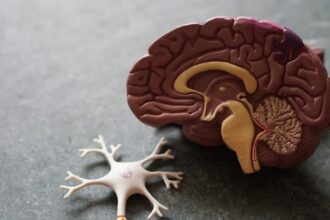Depersonalization Derealization Disorder (DPDR) is a complex and often misunderstood mental health condition that can leave individuals feeling detached from themselves and their surroundings. You may find yourself experiencing a sense of unreality, as if you are observing your life from a distance, or feeling disconnected from your own thoughts and emotions. This disorder can manifest in various ways, leading to significant distress and impairment in daily functioning.
Understanding DPDR is crucial, as it not only affects the individual but also has broader implications for mental health awareness and treatment. The experience of depersonalization and derealization can be disorienting and frightening. You might feel as though you are living in a dream or that the world around you is not quite real.
These sensations can be triggered by stress, trauma, or anxiety, making it essential to recognize the signs and seek appropriate help. As we delve into the history, treatment, and societal perspectives surrounding DPDR, you will gain a deeper understanding of this enigmatic disorder and its impact on those who experience it.
Key Takeaways
- Depersonalization Derealization Disorder is characterized by feeling detached from oneself and the world, leading to significant distress and impairment in daily functioning.
- Early observations and descriptions of depersonalization derealization date back to the 19th century, with notable contributions from psychiatrists such as Jaspers and Janet.
- Freud’s psychoanalytic theory contributed to the understanding of depersonalization derealization as a defense mechanism against overwhelming anxiety and trauma.
- Psychiatric classification and diagnostic criteria for depersonalization derealization have evolved over time, with the disorder now recognized in the DSM-5 as a dissociative disorder.
- Historical treatment approaches for depersonalization derealization disorder have included psychotherapy, medication, and experimental treatments, with varying degrees of success.
Early Observations and Descriptions of Depersonalization Derealization
The phenomenon of depersonalization has been documented for centuries, with early observations dating back to the works of philosophers and physicians. You may be surprised to learn that even in ancient times, individuals described feelings of detachment from their bodies or surroundings. These early accounts often lacked the scientific rigor we expect today, but they laid the groundwork for understanding the complexities of human consciousness and perception.
In the 19th century, depersonalization began to be recognized more formally within psychiatric literature. Pioneering figures such as Emil Kraepelin and Pierre Janet provided detailed descriptions of the condition, noting its association with anxiety and trauma. You might find it fascinating that these early observations highlighted the subjective nature of depersonalization, emphasizing how individuals perceive their experiences differently.
This recognition of personal experience continues to be a vital aspect of understanding DPDR today.
Freud’s Contribution to Understanding Depersonalization Derealization

Sigmund Freud’s work in psychoanalysis significantly influenced the understanding of depersonalization and derealization. You may know Freud primarily for his theories on the unconscious mind and psychosexual development, but he also explored the mechanisms behind various psychological phenomena, including dissociation. Freud posited that depersonalization could be a defense mechanism, a way for individuals to cope with overwhelming emotions or traumatic experiences.
Freud’s insights into the unconscious mind provided a framework for understanding how unresolved conflicts could lead to feelings of detachment. You might appreciate how his emphasis on the interplay between conscious and unconscious processes opened new avenues for exploring DPDR. While some of Freud’s theories have been critiqued over time, his contributions remain foundational in the field of psychology, influencing subsequent research and treatment approaches for individuals experiencing depersonalization.
Psychiatric Classification and Diagnostic Criteria
| Psychiatric Disorder | Diagnostic Criteria |
|---|---|
| Depression | Depressed mood, loss of interest or pleasure, significant weight loss or gain, insomnia or hypersomnia, fatigue, feelings of worthlessness, diminished ability to think or concentrate, recurrent thoughts of death |
| Anxiety | Excessive worry, restlessness, fatigue, difficulty concentrating, irritability, muscle tension, sleep disturbances |
| Schizophrenia | Delusions, hallucinations, disorganized speech, grossly disorganized or catatonic behavior, negative symptoms such as diminished emotional expression or avolition |
In contemporary psychiatry, Depersonalization Derealization Disorder is classified within the Diagnostic and Statistical Manual of Mental Disorders (DSM-5). You may find it interesting that the DSM-5 outlines specific diagnostic criteria for DPDR, which include persistent or recurrent experiences of depersonalization, derealization, or both. To receive a diagnosis, these experiences must cause significant distress or impairment in social, occupational, or other important areas of functioning.
Understanding these criteria is essential for both clinicians and individuals seeking help. You might be relieved to know that recognizing DPDR as a distinct disorder has led to increased awareness and validation for those who experience it. The classification also facilitates research into effective treatment options, helping to bridge the gap between clinical practice and patient experience.
Historical Treatment Approaches for Depersonalization Derealization Disorder
Historically, treatment approaches for depersonalization derealization disorder have varied widely, reflecting the evolving understanding of mental health over time. In earlier eras, individuals experiencing DPDR were often subjected to harsh treatments, including confinement in asylums or invasive medical procedures. You may find it unsettling to learn that these methods were based on limited knowledge about mental health conditions and often did more harm than good.
As psychiatric understanding progressed, so did treatment approaches. In the mid-20th century, psychotherapeutic techniques began to emerge as more humane alternatives. You might be intrigued by how cognitive-behavioral therapy (CBT) gained traction as a method for addressing the cognitive distortions associated with DPDR.
This shift towards more compassionate care marked a significant turning point in the treatment landscape for individuals grappling with depersonalization and derealization.
Contributions of Modern Psychiatry to Understanding Depersonalization Derealization

Modern psychiatry has made significant strides in understanding depersonalization derealization disorder through research and clinical practice. You may be aware that advancements in neuroimaging techniques have allowed researchers to explore the brain’s role in these experiences. Studies have identified alterations in brain activity associated with depersonalization, shedding light on the neurobiological underpinnings of the disorder.
Furthermore, contemporary therapeutic approaches have expanded beyond traditional talk therapy. You might find it encouraging that mindfulness-based interventions and grounding techniques are increasingly recognized as effective tools for managing DPDR symptoms. These approaches empower individuals to reconnect with their bodies and surroundings, fostering a sense of agency in their experiences.
The integration of modern research findings into treatment practices represents a hopeful direction for those affected by this disorder.
Cultural and Societal Perspectives on Depersonalization Derealization
Cultural and societal perspectives play a crucial role in shaping how depersonalization derealization disorder is understood and addressed. You may notice that different cultures interpret mental health experiences through unique lenses, influencing how individuals perceive their symptoms. In some societies, depersonalization may be viewed as a spiritual or existential crisis rather than a clinical disorder, leading to varied responses from family and community members.
Moreover, societal stigma surrounding mental health can impact individuals’ willingness to seek help for DPDR. You might resonate with the idea that cultural narratives around mental illness often perpetuate misconceptions, making it challenging for those experiencing depersonalization to find support. By fostering open conversations about mental health and promoting cultural sensitivity in treatment approaches, we can create a more inclusive environment for individuals navigating these complex experiences.
Research and Advances in Understanding Depersonalization Derealization
Ongoing research into depersonalization derealization disorder continues to unveil new insights into its causes and potential treatments. You may find it fascinating that studies are exploring genetic predispositions, environmental triggers, and neurobiological factors contributing to DPDR. This multifaceted approach allows researchers to develop a more comprehensive understanding of the disorder’s complexities.
Additionally, recent advances in therapeutic modalities have shown promise in alleviating symptoms associated with DPDR. You might be encouraged by emerging studies on the efficacy of virtual reality therapy as a tool for grounding individuals in their experiences. By immersing patients in controlled environments that simulate real-life situations, therapists can help them confront feelings of detachment in a safe space.
These innovative approaches represent exciting developments in the field of mental health.
The Impact of Depersonalization Derealization on Individuals and Society
The impact of depersonalization derealization disorder extends beyond individual experiences; it reverberates throughout society as well. You may recognize that living with DPDR can lead to significant challenges in daily life, affecting relationships, work performance, and overall well-being. The sense of disconnection can create barriers to forming meaningful connections with others, leaving individuals feeling isolated and misunderstood.
On a societal level, the prevalence of DPDR highlights the need for increased awareness and education about mental health issues. You might feel compelled to advocate for greater understanding within your community, as reducing stigma can encourage individuals to seek help without fear of judgment. By fostering an environment that prioritizes mental health awareness, we can collectively work towards supporting those affected by depersonalization derealization disorder.
Controversies and Debates Surrounding Depersonalization Derealization
Despite advancements in understanding depersonalization derealization disorder, controversies and debates persist within the field of psychiatry. You may encounter differing opinions regarding the classification of DPDR as a distinct disorder versus its inclusion within broader categories such as anxiety or trauma-related disorders. This ongoing discourse reflects the complexities inherent in diagnosing and treating mental health conditions.
Additionally, there are discussions surrounding the effectiveness of various treatment modalities for DPDR. While some practitioners advocate for psychotherapeutic approaches, others emphasize pharmacological interventions as essential components of care. You might find it valuable to engage with these debates critically, recognizing that individual experiences vary widely and that a one-size-fits-all approach may not be effective for everyone.
Future Directions in the Study and Treatment of Depersonalization Derealization Disorder
Looking ahead, the future of studying and treating depersonalization derealization disorder holds promise as researchers continue to explore innovative approaches. You may be excited by the potential for personalized treatment plans that consider individual differences in symptomatology and underlying causes. Advances in technology could also play a role in enhancing therapeutic interventions, making them more accessible to those in need.
You might feel inspired by the idea that incorporating diverse perspectives can lead to more holistic understandings of DPDR and its impact on individuals’ lives. As awareness grows and research expands, there is hope for improved outcomes for those navigating the challenges of depersonalization derealization disorder.
In conclusion, understanding Depersonalization Derealization Disorder requires an exploration of its historical context, cultural implications, and modern advancements in research and treatment. By engaging with these multifaceted aspects, you can contribute to a more compassionate dialogue surrounding mental health issues while advocating for those affected by this complex condition.
Depersonalization-derealization disorder (DDD) is a mental health condition characterized by persistent or recurrent feelings of detachment from one’s body or surroundings. The disorder was first recognized in the early 20th century, with significant advancements in understanding its symptoms and treatment occurring over the decades. For those interested in exploring more about the history and development of DDD, a related article can be found on the Unplugged Psychology website. This article delves into the nuances of the disorder and provides insights into its discovery and evolution. You can read more about it by visiting Unplugged Psychology.
Learn More About Depersonalization & Derealization
FAQs
What is depersonalization-derealization disorder?
Depersonalization-derealization disorder is a mental health condition characterized by feeling detached from one’s own body (depersonalization) and feeling disconnected from one’s surroundings (derealization).
When was depersonalization-derealization disorder first discovered?
Depersonalization-derealization disorder was first described in the 19th century by a French psychiatrist named Ludovic Dugas. However, it was not officially recognized as a distinct mental health disorder until the publication of the DSM-III (Diagnostic and Statistical Manual of Mental Disorders, Third Edition) in 1980.
What are the symptoms of depersonalization-derealization disorder?
Symptoms of depersonalization-derealization disorder include feeling like an outside observer of one’s thoughts, feelings, and actions (depersonalization) and feeling like the world is unreal or distorted (derealization). Other symptoms may include emotional numbness, disconnection from one’s own body, and difficulty forming emotional connections with others.
How is depersonalization-derealization disorder diagnosed?
Depersonalization-derealization disorder is diagnosed based on a thorough psychiatric evaluation, including a discussion of the individual’s symptoms and experiences. There are no specific tests for depersonalization-derealization disorder, so the diagnosis is made based on the presence of characteristic symptoms and the exclusion of other potential causes.
What are the treatment options for depersonalization-derealization disorder?
Treatment for depersonalization-derealization disorder may include psychotherapy, particularly cognitive-behavioral therapy (CBT), which focuses on identifying and changing negative thought patterns and behaviors. Medications such as antidepressants or anti-anxiety medications may also be prescribed in some cases. It’s important for individuals with this disorder to work closely with mental health professionals to find the most effective treatment approach for their specific needs.




